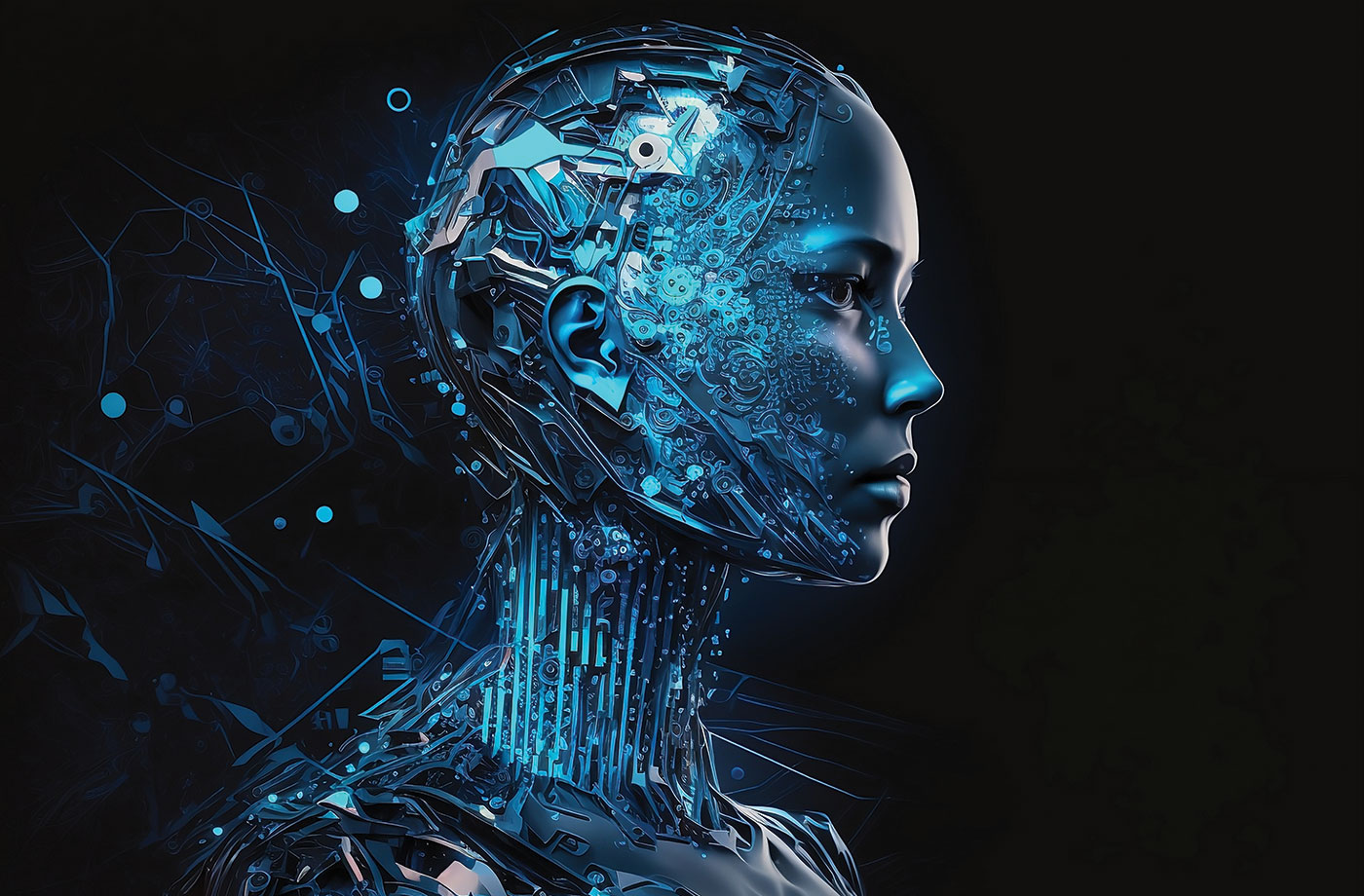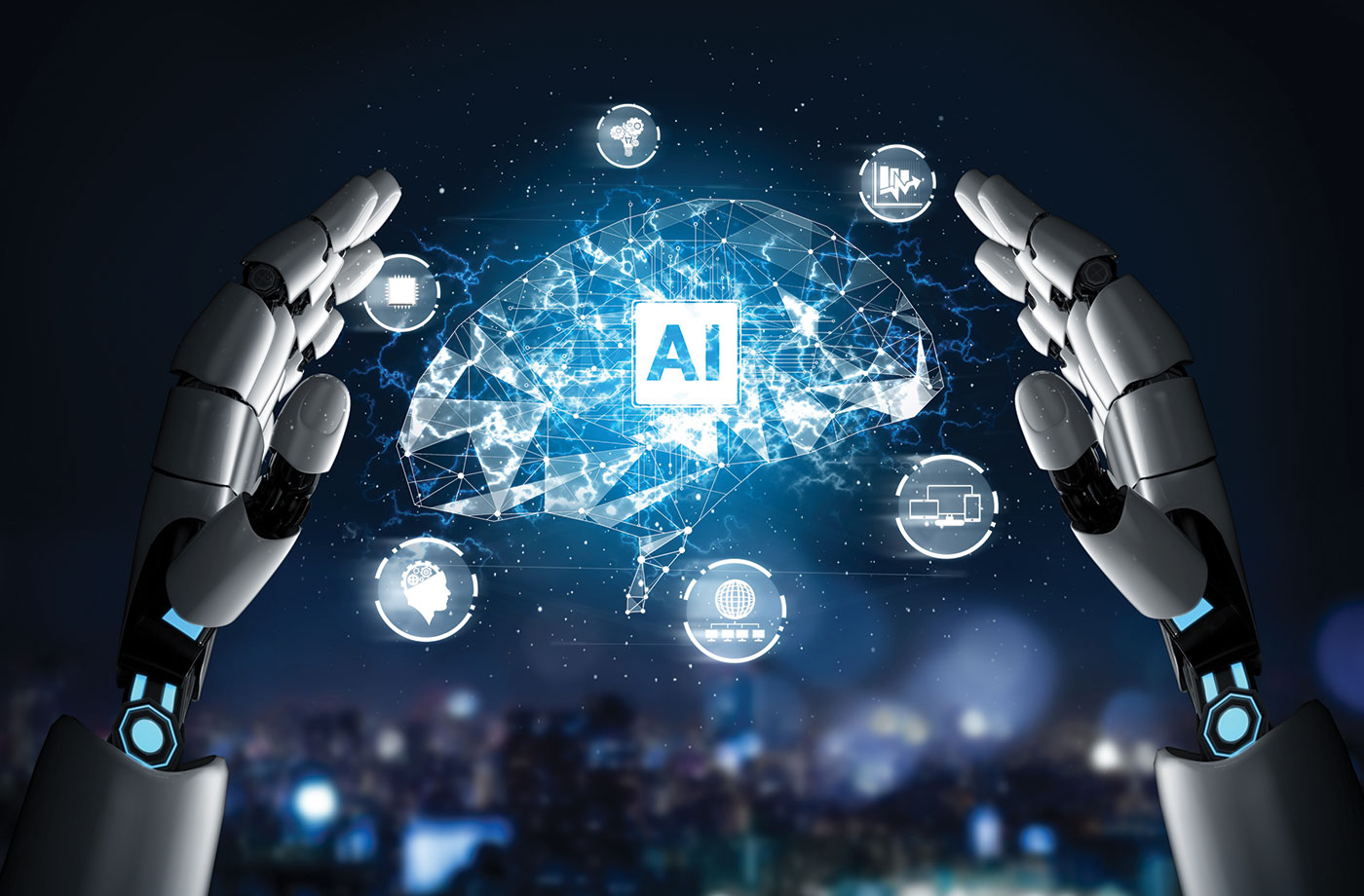Written by: Marko Marković, Partner at Egzakta Advisory
Deep learning is not just an algorithm; it is profound wisdom hidden at the heart of machines. In a world where algorithms become wizards and machine poets, the secret lies within the heart of artificial intelligence (AI). It's no longer just technology; it's becoming art, philosophy, a way of life. It's a bridge connecting the past and the future, a key unlocking the doors of innovation, a light illuminating the path to success, much like Andrić, who metaphorically connects historical periods and complex relationships of people living with the bridge through the centuries.
According to recent reports, the global artificial intelligence market was valued at $87 billion in 2022 and is expected to grow to $740 billion by 2027. This growth is not coincidental; it's the result of the power and potential of artificial intelligence to transform industries, improve efficiency, and open new possibilities.
The transformative potential offered by AI is driving this growth across various industries, from healthcare to finance, using its power for innovation and enhancements. AI opens up new opportunities in every sector, allowing companies to streamline operations, make better data-driven decisions, and create a whole range of new products and services.
Natural Language Processing (NLP) isn't just technology; it's a new language of communication. NLP is used in 80% of chatbots and virtual assistants, providing personalized services to millions of users worldwide. It's a bridge that connects worlds and cultures, a tool that opens the doors to understanding and empathy, much like Tolkien's "Quenya," a language that bridges different worlds. NLP allows us to communicate with machines in our language, breaking down barriers and opening new possibilities for interaction. Through NLP, we can converse with our devices, ask them questions, and even receive personalized recommendations and advice.
Computer vision is the eyes that see deeper and better than our own, objectively clear and precise. The computer vision market is expected to reach $19.1 billion by 2027, given its applications in healthcare, the automotive industry, and retail. These are eyes that peer into the heart of the industry and see untapped potential waiting to be discovered. Computer vision enables machines to interpret and understand the visual world around them. In healthcare, it's used for disease detection and patient health monitoring. In the automotive industry, it powers self-driving cars, and in retail, it transforms the shopping experience with automated checkouts and personalized recommendations.
Deep learning is not just an algorithm; it is profound wisdom hidden at the heart of machines. The deep learning market is expected to grow to $12.5 billion by 2025. It's a machine that learns, understands, and grows, much like Tolkien's "Western Gateway," leading to the Mines of Moria with the inscription, "Speak, friend, and enter." Deep learning is a branch of artificial intelligence that mimics the workings of the human brain in processing data and creating decision-making patterns. It's used to develop machines that can learn, understand, and grow, capable of performing complex tasks without explicit programming.
Algorithms are wizards dancing to the rhythm of data, whispering logic and mathematics, and painting pictures in the heart of the digital world. They are like Gandalf's staffs lighting the way, Andrić's bridges connecting shores, and Orwell's heroes fighting for truth. Algorithms are the backbone of AI, mathematical formulas that enable machines to learn from data, predict, and make decisions. They are wizards who transform raw data into valuable insights, helping businesses make better decisions, improve efficiency, and foster innovation.
Artificial intelligence machines are not ordinary machines; they seem to have a heart, maybe even dreams. They dream of a world where humans and machines are partners, where data and emotions are intertwined, and where technology and art are in harmony. These machines are not just tools; they are partners, collaborators, and even friends. They dream of a world where they can work together with humans, enhancing our abilities and helping us achieve our goals.

Data is not just numbers; they are rivers flowing through the landscape of business, nourishing the fields of industry and refreshing the cities of the economy. Over 2.5 quintillion bytes of data are generated every day, providing invaluable assistance and opportunities for the business world. Data is the lifeblood of the digital economy, powering everything from e-commerce to social media. With the right tools and techniques, companies can harness this data to gain insights, improve their products and services, and make better decisions.
Like Tolkien's elves crafting masterpieces with care, RPA automates repetitive tasks, freeing up workers to focus on creativity, innovation, and complex problem-solving. It's a harmonious collaboration between humans and machines, where robots handle the mundane, allowing humans to reach new heights of imagination and genius.
Edge computing pushes the boundaries of exploration, the horizon of possibilities; it's the gateway to the future. The edge computing market is expected to reach $250.6 billion by 2027, as it brings computing and data storage closer to where it's needed, reducing latency and improving performance. Much like Andrić's bridges connecting distant lands, EDGE connects remote devices, enabling real-time analysis and decision-making. It's a bridge to a world where data flows seamlessly, where information arrives instantly, and where opportunities are seized in the blink of an eye. It's a new paradigm that redefines how we interact with technology, opening doors to uncharted territories and endless possibilities.
AI is the melody echoing through time, the harmony that connects the past, present, and future. In a world where humans dream, and machines build, artificial intelligence is the key that unlocks the doors to the future. AI offers us a vision of a world where machines can help us solve our greatest challenges, achieve our highest aspirations, and realize our full potential. It's a vision of the future where technology serves humanity, where progress is guided by values, and where innovation is driven by the desire to make the world a better place.
More than 75% of companies are now considering the ethical aspects of AI, realizing the importance of transparency and responsibility. It's Andrić's bridge that connects people but also carries the burden of past generations from which we must learn. As AI becomes increasingly integrated into our lives, ethical implications become more critical. Companies must ensure that their AI systems are transparent, fair, and responsible, respecting user privacy and avoiding bias or discrimination. These ethical considerations are essential for building trust and acceptance of AI among users. It's up to us not to allow this immense potential to be misused but to be used for ethical purposes.
Machines will not replace humans; machines will enable humans to realize their full potential. We should not fear technology; we should find ways for that technology to benefit us for good, expand our possibilities, and improve our lives. As we stand on the bridge between the past and the future, there's nothing left for us to do but embrace the help of artificial intelligence and step into a future full of hope, opportunities, and endless possibilities.


